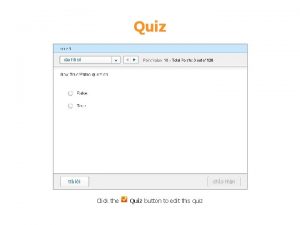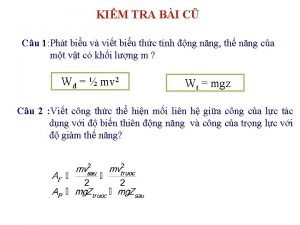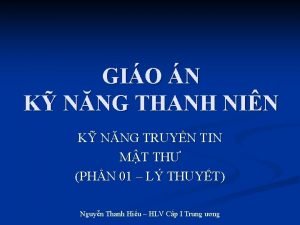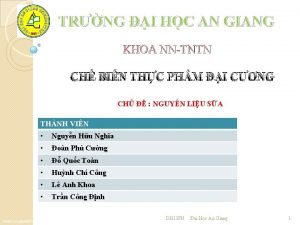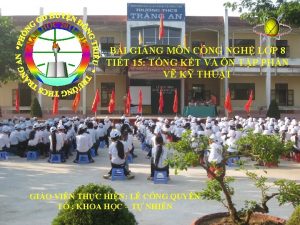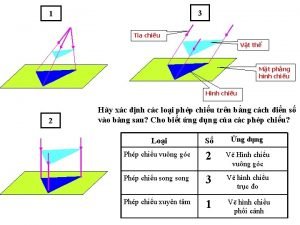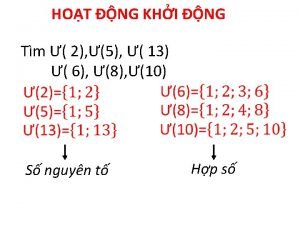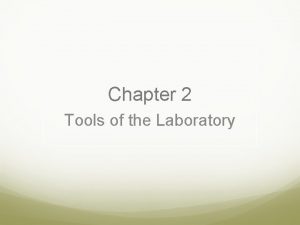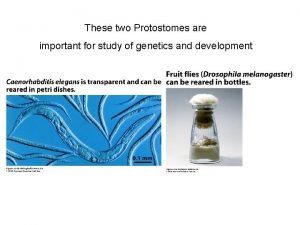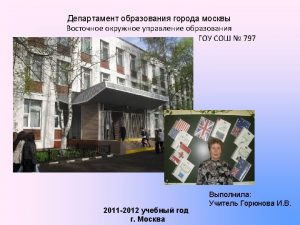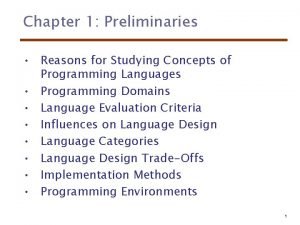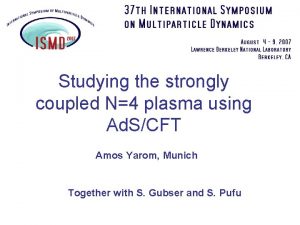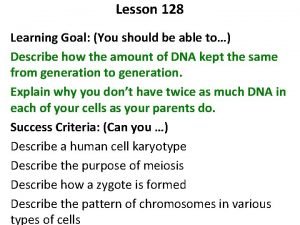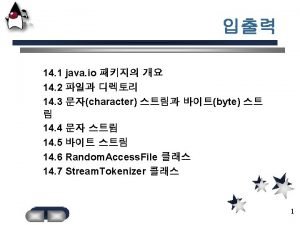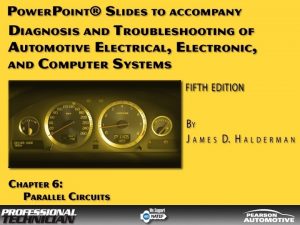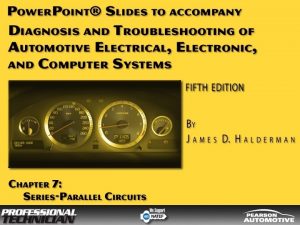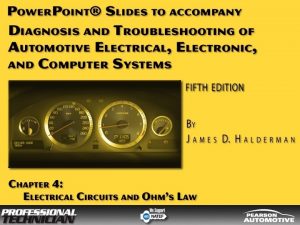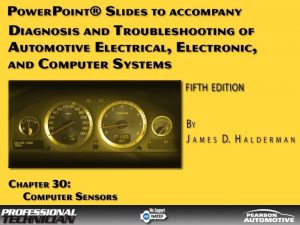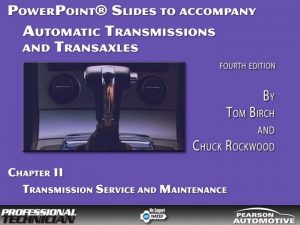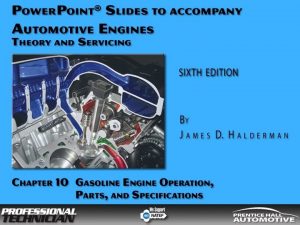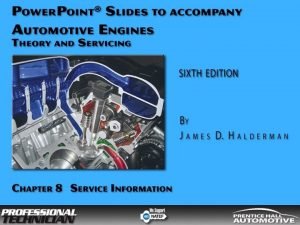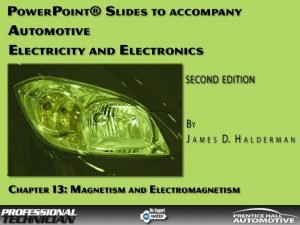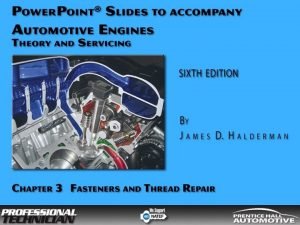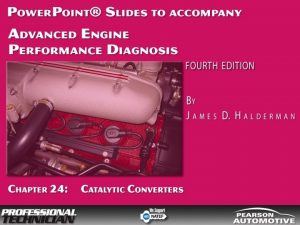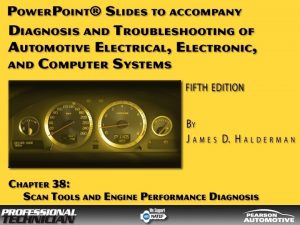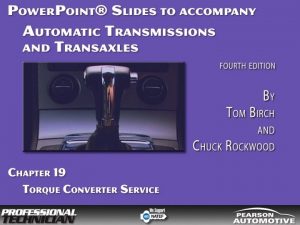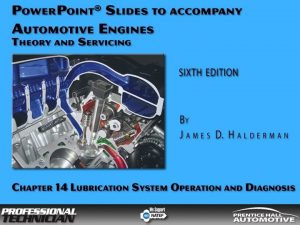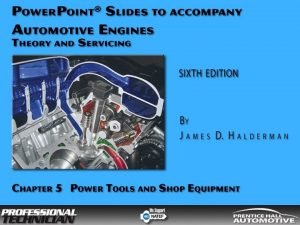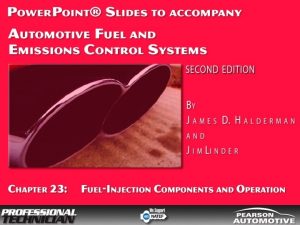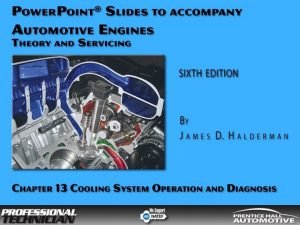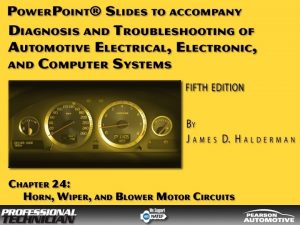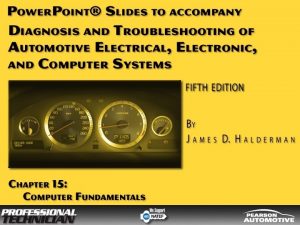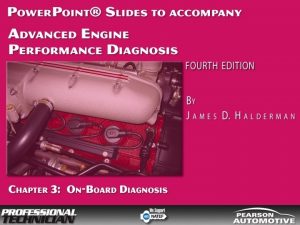OBJECTIVES After studying Chapter 20 the reader will


OBJECTIVES After studying Chapter 20, the reader will be able to: 1. Prepare for ASE Engine Performance (A 8) certification test content area “B” (Ignition System Diagnosis and Repair). 2. Explain how ignition coils create 40, 000 volts. 3. Discuss crankshaft position sensor and pickup coil operation. 4. Describe the operation of waste-spark and coil-onplug ignition systems. Automotive Fuel and Emissions Control Systems, 2/e By James D. Halderman and Jim Linder © 2009 Pearson Higher Education, Inc. Pearson Prentice Hall - Upper Saddle River, NJ 07458

IGNITION SYSTEM OPERATION • The ignition system includes components and wiring necessary to create and distribute a high voltage (up to 40, 000 volts or more). • All ignition systems apply voltage close to battery voltage to the positive side of the ignition coil and pulse the negative side to ground. Automotive Fuel and Emissions Control Systems, 2/e By James D. Halderman and Jim Linder © 2009 Pearson Higher Education, Inc. Pearson Prentice Hall - Upper Saddle River, NJ 07458

IGNITION COILS • The heart of any ignition system is the ignition coil. • The coil creates a highvoltage spark by electromagnetic induction. • Many ignition coils contain two separate but electrically connected windings of copper wire. FIGURE 20 -1 Internal construction of an oil-cooled ignition coil. Notice that the primary winding is electrically connected to the secondary winding. The polarity (positive or negative) of a coil is determined by the direction in which the coil is wound. Automotive Fuel and Emissions Control Systems, 2/e By James D. Halderman and Jim Linder © 2009 Pearson Higher Education, Inc. Pearson Prentice Hall - Upper Saddle River, NJ 07458

IGNITION COILS FIGURE 20 -2 Typical air-cooled epoxy-filled E coil. Automotive Fuel and Emissions Control Systems, 2/e By James D. Halderman and Jim Linder FIGURE 20 -3 Cutaway of a General Motors Type II distributorless ignition coil. Note that the primary windings are inside of the secondary windings. © 2009 Pearson Higher Education, Inc. Pearson Prentice Hall - Upper Saddle River, NJ 07458

IGNITION COILS • • • Self-Induction Mutual Induction How Ignition Coils Create 40, 000 Volts Primary Ignition Circuit Secondary Ignition Circuit Automotive Fuel and Emissions Control Systems, 2/e By James D. Halderman and Jim Linder © 2009 Pearson Higher Education, Inc. Pearson Prentice Hall - Upper Saddle River, NJ 07458

IGNITION COILS FIGURE 20 -4 Typical primary and secondary electronic ignition using a ballast resistor and a distributor. To protect the ignition coil from overheating at lower engine speeds, many electronic ignitions do not use a ballast resistor but use electronic circuits within the module. Automotive Fuel and Emissions Control Systems, 2/e By James D. Halderman and Jim Linder © 2009 Pearson Higher Education, Inc. Pearson Prentice Hall - Upper Saddle River, NJ 07458

IGNITION SWITCHING AND TRIGGERING • For any ignition system to function, the primary current must be turned on to charge the coil and off to allow the coil to discharge, creating a high-voltage spark. • This turning on and off of the primary circuit is called switching. • The unit that does the switching is an electronic switch, such as a power transistor. • This power transistor can be located in any of the following locations: – In the ignition control module (ICM) – In the PCM (computer) Automotive Fuel and Emissions Control Systems, 2/e By James D. Halderman and Jim Linder © 2009 Pearson Higher Education, Inc. Pearson Prentice Hall - Upper Saddle River, NJ 07458

WHAT IS A “MARRIED”AND “DIVORCED”COIL DESIGN? FIGURE 20 -5 A tapped-(married) type ignition coil where the primary winding is tapped (connected) to the secondary winding. Automotive Fuel and Emissions Control Systems, 2/e By James D. Halderman and Jim Linder © 2009 Pearson Higher Education, Inc. Pearson Prentice Hall - Upper Saddle River, NJ 07458

PRIMARY CIRCUIT OPERATION • To get a spark out of an ignition coil, the primary coil circuit must be turned on and off. • This primary circuit current is controlled by a transistor (electronic switch) inside the ignition module or (igniter) that in turn is controlled by one of several devices, including: – – Pickup coil (pulse generator). Hall-effect switch. Magnetic crankshaft position sensor. Optical Sensors. Automotive Fuel and Emissions Control Systems, 2/e By James D. Halderman and Jim Linder © 2009 Pearson Higher Education, Inc. Pearson Prentice Hall - Upper Saddle River, NJ 07458

PRIMARY CIRCUIT OPERATION FIGURE 20 -6 Operation of a typical pulse generator (pickup coil). At the bottom is a line drawing of a typical scope pattern of the output voltage of a pickup coil. The module receives this voltage from the pickup coil and opens the ground circuit to the ignition coil when the voltage starts down from its peak (just as the reluctor teeth start moving away from the pickup coil). Automotive Fuel and Emissions Control Systems, 2/e By James D. Halderman and Jim Linder © 2009 Pearson Higher Education, Inc. Pearson Prentice Hall - Upper Saddle River, NJ 07458

PRIMARY CIRCUIT OPERATION FIGURE 20 -7 The varying voltage signal from the pickup coil triggers the ignition module. The ignition module grounds and un-grounds the primary winding of the ignition coil, creating a high-voltage spark. Automotive Fuel and Emissions Control Systems, 2/e By James D. Halderman and Jim Linder © 2009 Pearson Higher Education, Inc. Pearson Prentice Hall - Upper Saddle River, NJ 07458

PRIMARY CIRCUIT OPERATION FIGURE 20 -8 Hall-effect switches use metallic shutters to shunt magnetic lines of force away from a silicon chip and related circuits. All Hall-effect switches produce a square wave output for every accurate triggering. Automotive Fuel and Emissions Control Systems, 2/e By James D. Halderman and Jim Linder © 2009 Pearson Higher Education, Inc. Pearson Prentice Hall - Upper Saddle River, NJ 07458

PRIMARY CIRCUIT OPERATION FIGURE 20 -9 Shutter blade of a rotor as it passes between the sensing silicon chip and the permanent magnet. Automotive Fuel and Emissions Control Systems, 2/e By James D. Halderman and Jim Linder © 2009 Pearson Higher Education, Inc. Pearson Prentice Hall - Upper Saddle River, NJ 07458

PRIMARY CIRCUIT OPERATION FIGURE 20 -10 Some Halleffect sensors look like magnetic sensors. This Halleffect camshaft reference sensor and crankshaft position sensor have an electronic circuit built in that creates a 0 - to 5 -volt signal as shown at the bottom. These Hall-effect sensors have three wires: a power supply (8 volts) from the computer (controller); a signal (0 to 5 volts); and a signal ground. Automotive Fuel and Emissions Control Systems, 2/e By James D. Halderman and Jim Linder © 2009 Pearson Higher Education, Inc. Pearson Prentice Hall - Upper Saddle River, NJ 07458

PRIMARY CIRCUIT OPERATION FIGURE 20 -11 A magnetic sensor uses a permanent magnet surrounded by a coil of wire. The notches of the crankshaft (or camshaft) create a variable magnetic field strength around the coil. When a metallic section is close to the sensor, the magnetic field is stronger because metal is a better conductor of magnetic lines of force than air. Automotive Fuel and Emissions Control Systems, 2/e By James D. Halderman and Jim Linder © 2009 Pearson Higher Education, Inc. Pearson Prentice Hall - Upper Saddle River, NJ 07458

PRIMARY CIRCUIT OPERATION FIGURE 20 -12 A typical magnetic crankshaft position sensor. Automotive Fuel and Emissions Control Systems, 2/e By James D. Halderman and Jim Linder © 2009 Pearson Higher Education, Inc. Pearson Prentice Hall - Upper Saddle River, NJ 07458

PRIMARY CIRCUIT OPERATION FIGURE 20 -13 (a) Typical optical distributor. (b) Cylinder I slit signals the computer the piston position for cylinder I. The I-degree slits provide accurate engine speed information to the computer. Automotive Fuel and Emissions Control Systems, 2/e By James D. Halderman and Jim Linder © 2009 Pearson Higher Education, Inc. Pearson Prentice Hall - Upper Saddle River, NJ 07458

OPTICAL DISTRIBUTORS DO NOT LIKE LIGHT FIGURE 20 -14 (a) An optical distributor on a Nissan 3. 0 L V-6 shown with the light shield removed. (b) A light shield being installed before the rotor is attached. Automotive Fuel and Emissions Control Systems, 2/e By James D. Halderman and Jim Linder © 2009 Pearson Higher Education, Inc. Pearson Prentice Hall - Upper Saddle River, NJ 07458

DISTRIBUTOR IGNITION • • General Motors HEI Electronic Ignition Ford Electronic Ignition Operation of Ford Distributor Ignition Chrysler Distributor Ignition Automotive Fuel and Emissions Control Systems, 2/e By James D. Halderman and Jim Linder © 2009 Pearson Higher Education, Inc. Pearson Prentice Hall - Upper Saddle River, NJ 07458

DISTRIBUTOR IGNITION FIGURE 20 -15 An HEI distributor. Automotive Fuel and Emissions Control Systems, 2/e By James D. Halderman and Jim Linder © 2009 Pearson Higher Education, Inc. Pearson Prentice Hall - Upper Saddle River, NJ 07458

DISTRIBUTOR IGNITION FIGURE 20 -16 A typical General Motors HEI coil installed in the distributor cap. When the coil or distributor cap is replaced, check that the ground clip is transferred from the old distributor cap to the new. Without proper grounding, coil damage is likely. There are two designs of HEI coils. One uses red and white wire as shown, and the other design, which has reversed polarity, uses red and yellow wire for the coil primary. Automotive Fuel and Emissions Control Systems, 2/e By James D. Halderman and Jim Linder © 2009 Pearson Higher Education, Inc. Pearson Prentice Hall - Upper Saddle River, NJ 07458

DISTRIBUTOR IGNITION FIGURE 20 -17 This uses a remotely mounted ignition coil. Automotive Fuel and Emissions Control Systems, 2/e By James D. Halderman and Jim Linder © 2009 Pearson Higher Education, Inc. Pearson Prentice Hall - Upper Saddle River, NJ 07458

DISTRIBUTOR IGNITION FIGURE 20 -18 Wiring diagram of a typical Ford electronic ignition. Automotive Fuel and Emissions Control Systems, 2/e By James D. Halderman and Jim Linder © 2009 Pearson Higher Education, Inc. Pearson Prentice Hall - Upper Saddle River, NJ 07458

DISTRIBUTOR IGNITION FIGURE 20 -19 Schematic of a Ford TFI-IV ignition system. The SPOUT connector is unplugged when ignition timing is being set. Automotive Fuel and Emissions Control Systems, 2/e By James D. Halderman and Jim Linder © 2009 Pearson Higher Education, Inc. Pearson Prentice Hall - Upper Saddle River, NJ 07458

DISTRIBUTOR IGNITION FIGURE 20 -20 A Chrysler electronic ignition distributor. This unit is equipped with a vacuum advance mechanism that advances the ignition timing under light engine load conditions. Automotive Fuel and Emissions Control Systems, 2/e By James D. Halderman and Jim Linder © 2009 Pearson Higher Education, Inc. Pearson Prentice Hall - Upper Saddle River, NJ 07458

WASTE-SPARK IGNITION SYSTEMS • Waste-spark ignition is another name for distributorless ignition system (DIS) or electronic ignition (EI). • Wastespark ignition was introduced in the mid 1980 s and uses the onboard computer to fire the ignition coils. Automotive Fuel and Emissions Control Systems, 2/e By James D. Halderman and Jim Linder © 2009 Pearson Higher Education, Inc. Pearson Prentice Hall - Upper Saddle River, NJ 07458

WASTE-SPARK IGNITION SYSTEMS FIGURE 20 -21 A waste-spark system fires one cylinder while its piston is on the compression stroke and into paired or companion cylinders while it is on the exhaust stroke. In a typical engine, it requires only about 2 to 3 k. V to fire the cylinder on the exhaust strokes. The remaining coil energy is available to fire the spark plug under compression (typically about 8 to 12 k. V) Automotive Fuel and Emissions Control Systems, 2/e By James D. Halderman and Jim Linder © 2009 Pearson Higher Education, Inc. Pearson Prentice Hall - Upper Saddle River, NJ 07458

WASTE-SPARK IGNITION SYSTEMS FIGURE 20 -22 The left-hand rule states that if a coil is grasped with the left hand, the fingers will point in the direction of current flow and the thumb will point toward the north pole. Automotive Fuel and Emissions Control Systems, 2/e By James D. Halderman and Jim Linder © 2009 Pearson Higher Education, Inc. Pearson Prentice Hall - Upper Saddle River, NJ 07458

WASTE-SPARK IGNITION SYSTEMS FIGURE 20 -23 Typical Ford EDIS 4 -cylinder ignition system. The crankshaft sensor, called a variablereluctance sensor (VRS), sends crankshaft position and speed information to the EDIS module. A modified signal is sent to the computer as a profile ignition pickup (PIP) signal. The PIP is used by the computer to calculate ignition timing, and the computer sends a signal back to the EDIS module as to when to fire the spark plug. This return signal is called the spark angle word (SAW) signal. Automotive Fuel and Emissions Control Systems, 2/e By James D. Halderman and Jim Linder © 2009 Pearson Higher Education, Inc. Pearson Prentice Hall - Upper Saddle River, NJ 07458

IGNITION CONTROL CIRCUITS • Ignition control (IC) is the OBD-II terminology for the output signal from the PCM to the ignition system that controls engine timing. Automotive Fuel and Emissions Control Systems, 2/e By James D. Halderman and Jim Linder © 2009 Pearson Higher Education, Inc. Pearson Prentice Hall - Upper Saddle River, NJ 07458

BYPASS IGNITION CONTROL • A bypass-type ignition control means that the engine starts using the ignition module for timing control and then switches to the PCM for timing control after the engine starts. • A bypass ignition is commonly used on General Motors engines equipped with distributor ignition (DI), as well as those equipped with waste-spark ignition. • The bypass circuit includes four wires: – – Tach reference (purple/white) Ground (black/white). Bypass (tan/black). EST (ignition control) (white wire). Automotive Fuel and Emissions Control Systems, 2/e By James D. Halderman and Jim Linder © 2009 Pearson Higher Education, Inc. Pearson Prentice Hall - Upper Saddle River, NJ 07458

BYPASS IGNITION CONTROL FIGURE 20 -24 Typical wiring diagram of a V-6 distributorless (direct fire) ignition system. Automotive Fuel and Emissions Control Systems, 2/e By James D. Halderman and Jim Linder © 2009 Pearson Higher Education, Inc. Pearson Prentice Hall - Upper Saddle River, NJ 07458

UP-INTEGRATED IGNITION CONTROL • Most coil-on-plug and many waste-spark-type ignition systems use the PCM for ignition timing control. • This type of ignition control is called up-integrated because all timing functions are interpreted in the PCM, rather than being split between the ignition control module and the PCM. Automotive Fuel and Emissions Control Systems, 2/e By James D. Halderman and Jim Linder © 2009 Pearson Higher Education, Inc. Pearson Prentice Hall - Upper Saddle River, NJ 07458

COMPRESSION-SENSING IGNITION • Some waste-spark ignition systems, such as those used on Saturns, use the voltage required to fire the cylinders to determine cylinder position. – It requires a higher voltage to fire a spark plug under compression than it does when the spark plug is being fired on the exhaust stroke. The Automotive Fuel and Emissions Control Systems, 2/e By James D. Halderman and Jim Linder © 2009 Pearson Higher Education, Inc. Pearson Prentice Hall - Upper Saddle River, NJ 07458

COIL-ON-PLUG IGNITION • Coil-on-plug (COP) ignition uses one ignition coil for each spark plug. • This system is also called coil-by-plug, coilnearplug, or coil-over-plug ignition. – Two-wire. – Three-wire. Automotive Fuel and Emissions Control Systems, 2/e By James D. Halderman and Jim Linder © 2009 Pearson Higher Education, Inc. Pearson Prentice Hall - Upper Saddle River, NJ 07458

COIL-ON-PLUG IGNITION FIGURE 20 -25 A coil-on-plug ignition system. Automotive Fuel and Emissions Control Systems, 2/e By James D. Halderman and Jim Linder © 2009 Pearson Higher Education, Inc. Pearson Prentice Hall - Upper Saddle River, NJ 07458

COIL-ON-PLUG IGNITION FIGURE 20 -26 A typical coil-on-plug (COP) ignition system on a V-8 with a separate coil for each cylinder. Automotive Fuel and Emissions Control Systems, 2/e By James D. Halderman and Jim Linder © 2009 Pearson Higher Education, Inc. Pearson Prentice Hall - Upper Saddle River, NJ 07458

COIL-ON-PLUG IGNITION FIGURE 20 -27 Individual coils with modules shown on the General Motors 4. 2 -L inline 6 -cylinder light-truck engine. Note the aluminum cooling fins (heat sink) on top of each assembly. Automotive Fuel and Emissions Control Systems, 2/e By James D. Halderman and Jim Linder © 2009 Pearson Higher Education, Inc. Pearson Prentice Hall - Upper Saddle River, NJ 07458

ION-SENSING IGNITION • In an ion-sensing ignition system, the spark plug itself becomes a sensor. • The ignition control (IC) module applies a voltage of about 100 to 400 volts DC across the spark plug gap after the ignition event to sense the plasma inside the cylinder. FIGURE 20 -28 A DC voltage is applied across the spark plug gap after the plug fires and the circuit can determine if the correct air–fuel ratio was present in the cylinder and if knock occurred. Automotive Fuel and Emissions Control Systems, 2/e By James D. Halderman and Jim Linder © 2009 Pearson Higher Education, Inc. Pearson Prentice Hall - Upper Saddle River, NJ 07458

IGNITION TIMING • Ignition timing refers to when the spark plug fires in relation to piston position. – The time when the spark occurs depends on engine speed, and therefore must be advanced (spark plugs fire some) as the engine rotates faster. FIGURE 20 -29 Ignition timing marks are found on the harmonic balancers that are equipped with distributor ignition. Automotive Fuel and Emissions Control Systems, 2/e By James D. Halderman and Jim Linder © 2009 Pearson Higher Education, Inc. Pearson Prentice Hall - Upper Saddle River, NJ 07458

INITIAL TIMING • If the engine is equipped with a distributor, it may be possible to adjust the base or the initial timing. • The initial timing is usually set to fire the spark plug between zero degrees (top dead center or TDC) or slightly before TDC (BTDC). FIGURE 20 -30 The initial timing is where the spark plug fires at idle speed. The computer then advances the timing based on engine speed and other factors. Automotive Fuel and Emissions Control Systems, 2/e By James D. Halderman and Jim Linder © 2009 Pearson Higher Education, Inc. Pearson Prentice Hall - Upper Saddle River, NJ 07458

KNOCK SENSORS • Knock sensors are used to detect abnormal combustion, often called ping, spark knock, or detonation. – Whenever abnormal combustion occurs, a rapid pressure increase occurs in the cylinder, creating a vibration in the engine block. • Diagnosing the Knock Sensor • Replacing a Knock Sensor Automotive Fuel and Emissions Control Systems, 2/e By James D. Halderman and Jim Linder © 2009 Pearson Higher Education, Inc. Pearson Prentice Hall - Upper Saddle River, NJ 07458

KNOCK SENSORS FIGURE 20 -31 A typical waveform from a knock sensor during a spark knock event. This signal is sent to the computer which in turn retards the ignition timing. This timing retard is accomplished by an output command from the computer to either a spark advance control unit or directly to the ignition module. Automotive Fuel and Emissions Control Systems, 2/e By James D. Halderman and Jim Linder © 2009 Pearson Higher Education, Inc. Pearson Prentice Hall - Upper Saddle River, NJ 07458

SPARK PLUGS • Spark plugs are manufactured from ceramic insulators inside a steel shell. • The threads of the shell are rolled and a seat is formed to create a gastight seal with the cylinder head. FIGURE 20 -32 Parts of a typical spark plug. Automotive Fuel and Emissions Control Systems, 2/e By James D. Halderman and Jim Linder © 2009 Pearson Higher Education, Inc. Pearson Prentice Hall - Upper Saddle River, NJ 07458

SPARK PLUGS • The physical difference in spark plugs includes: – Reach. This is the length of the threaded part of the plug. – Heat range. – Type of seat. • Resistor Spark Plugs • Platinum Spark Plugs • Iridium Spark Plugs Automotive Fuel and Emissions Control Systems, 2/e By James D. Halderman and Jim Linder © 2009 Pearson Higher Education, Inc. Pearson Prentice Hall - Upper Saddle River, NJ 07458

SPARK PLUGS FIGURE 20 -33 The heat range of a spark plug is determined by the distance the heat has to flow from the tip to the cylinder head. Automotive Fuel and Emissions Control Systems, 2/e By James D. Halderman and Jim Linder © 2009 Pearson Higher Education, Inc. Pearson Prentice Hall - Upper Saddle River, NJ 07458

SUMMARY 1. All inductive ignition systems supply battery voltage to the positive side of the ignition coil and pulse the negative side of the coil on and off to ground to create a highvoltage spark. 2. If an ignition system uses a distributor, it is a distributor ignition (DI) system. 3. If an ignition system does not use a distributor, it is called an electronic ignition (EI) system. 4. A waste-spark ignition system fires two spark plugs at the same time. 5. A coil-on-plug ignition system uses an ignition coil for each spark plug. Automotive Fuel and Emissions Control Systems, 2/e By James D. Halderman and Jim Linder © 2009 Pearson Higher Education, Inc. Pearson Prentice Hall - Upper Saddle River, NJ 07458

REVIEW QUESTIONS 1. How can 12 volts from a battery be changed to 40, 000 volts for ignition? 2. How does a magnetic sensor work? 3. How does a Hall-effect sensor work? 4. How does a waste-spark ignition system work? Automotive Fuel and Emissions Control Systems, 2/e By James D. Halderman and Jim Linder © 2009 Pearson Higher Education, Inc. Pearson Prentice Hall - Upper Saddle River, NJ 07458

CHAPTER QUIZ 1. The primary (low-voltage) ignition system must be working correctly before any spark occurs from a coil. Which component is not in the primary ignition circuit? a) b) c) d) Spark plug wiring Ignition module (igniter) Pickup coil (pulse generator 0 Ignition switch Automotive Fuel and Emissions Control Systems, 2/e By James D. Halderman and Jim Linder © 2009 Pearson Higher Education, Inc. Pearson Prentice Hall - Upper Saddle River, NJ 07458

CHAPTER QUIZ 1. The primary (low-voltage) ignition system must be working correctly before any spark occurs from a coil. Which component is not in the primary ignition circuit? a) b) c) d) Spark plug wiring Ignition module (igniter) Pickup coil (pulse generator 0 Ignition switch Automotive Fuel and Emissions Control Systems, 2/e By James D. Halderman and Jim Linder © 2009 Pearson Higher Education, Inc. Pearson Prentice Hall - Upper Saddle River, NJ 07458

CHAPTER QUIZ 2. The ignition module has direct control over the firing of the coil(s) of an EI system. Which component(s) triggers (controls) the module? a) b) c) d) Pickup coil Computer Crankshaft sensor All of the above Automotive Fuel and Emissions Control Systems, 2/e By James D. Halderman and Jim Linder © 2009 Pearson Higher Education, Inc. Pearson Prentice Hall - Upper Saddle River, NJ 07458

CHAPTER QUIZ 2. The ignition module has direct control over the firing of the coil(s) of an EI system. Which component(s) triggers (controls) the module? a) b) c) d) Pickup coil Computer Crankshaft sensor All of the above Automotive Fuel and Emissions Control Systems, 2/e By James D. Halderman and Jim Linder © 2009 Pearson Higher Education, Inc. Pearson Prentice Hall - Upper Saddle River, NJ 07458

CHAPTER QUIZ 3. Distributorless (waste-spark) ignition systems can be triggered by a ______. a) b) c) d) Hall-effect sensor Magnetic sensor Spark sensor Either a or b Automotive Fuel and Emissions Control Systems, 2/e By James D. Halderman and Jim Linder © 2009 Pearson Higher Education, Inc. Pearson Prentice Hall - Upper Saddle River, NJ 07458

CHAPTER QUIZ 3. Distributorless (waste-spark) ignition systems can be triggered by a ______. a) b) c) d) Hall-effect sensor Magnetic sensor Spark sensor Either a or b Automotive Fuel and Emissions Control Systems, 2/e By James D. Halderman and Jim Linder © 2009 Pearson Higher Education, Inc. Pearson Prentice Hall - Upper Saddle River, NJ 07458

CHAPTER QUIZ 4. HEI, Duraspark, and EIS are examples of ______. a) b) c) d) Waste-spark systems Coil-on-plug ignition systems Distributor ignition systems Pickup coil types Automotive Fuel and Emissions Control Systems, 2/e By James D. Halderman and Jim Linder © 2009 Pearson Higher Education, Inc. Pearson Prentice Hall - Upper Saddle River, NJ 07458

CHAPTER QUIZ 4. HEI, Duraspark, and EIS are examples of ______. a) b) c) d) Waste-spark systems Coil-on-plug ignition systems Distributor ignition systems Pickup coil types Automotive Fuel and Emissions Control Systems, 2/e By James D. Halderman and Jim Linder © 2009 Pearson Higher Education, Inc. Pearson Prentice Hall - Upper Saddle River, NJ 07458

CHAPTER QUIZ 5. Coil polarity is determined by the ______. a) b) c) d) Direction of rotation of the coil windings Turns ratios Direction of laminations Saturation direction Automotive Fuel and Emissions Control Systems, 2/e By James D. Halderman and Jim Linder © 2009 Pearson Higher Education, Inc. Pearson Prentice Hall - Upper Saddle River, NJ 07458
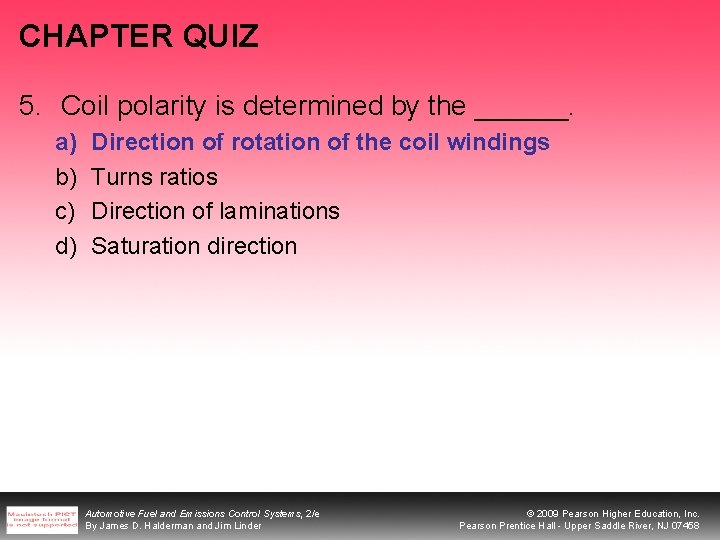
CHAPTER QUIZ 5. Coil polarity is determined by the ______. a) b) c) d) Direction of rotation of the coil windings Turns ratios Direction of laminations Saturation direction Automotive Fuel and Emissions Control Systems, 2/e By James D. Halderman and Jim Linder © 2009 Pearson Higher Education, Inc. Pearson Prentice Hall - Upper Saddle River, NJ 07458

CHAPTER QUIZ 6. Because of ______, an ignition coil cannot be fully charged (reach magnetic saturation) until after a delay of about 10 ms. a) Voltage drop across the ignition switch and related wiring b) Resistance in the coil windings c) Inductive reactance d) Saturation Automotive Fuel and Emissions Control Systems, 2/e By James D. Halderman and Jim Linder © 2009 Pearson Higher Education, Inc. Pearson Prentice Hall - Upper Saddle River, NJ 07458
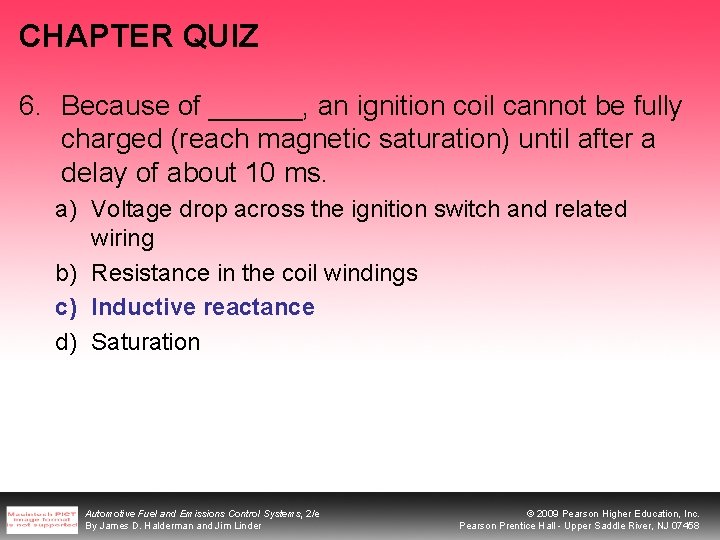
CHAPTER QUIZ 6. Because of ______, an ignition coil cannot be fully charged (reach magnetic saturation) until after a delay of about 10 ms. a) Voltage drop across the ignition switch and related wiring b) Resistance in the coil windings c) Inductive reactance d) Saturation Automotive Fuel and Emissions Control Systems, 2/e By James D. Halderman and Jim Linder © 2009 Pearson Higher Education, Inc. Pearson Prentice Hall - Upper Saddle River, NJ 07458

CHAPTER QUIZ 7. The pulse generator ______. a) b) c) d) Fires the spark plug directly Signals the electronic control unit (module) Signals the computer that fires the spark plug directly Is used as a tachometer reference signal by the computer and has no other function Automotive Fuel and Emissions Control Systems, 2/e By James D. Halderman and Jim Linder © 2009 Pearson Higher Education, Inc. Pearson Prentice Hall - Upper Saddle River, NJ 07458
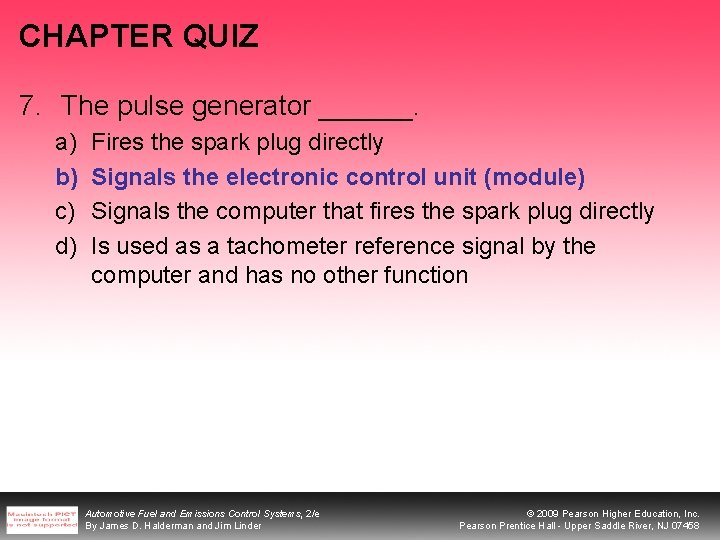
CHAPTER QUIZ 7. The pulse generator ______. a) b) c) d) Fires the spark plug directly Signals the electronic control unit (module) Signals the computer that fires the spark plug directly Is used as a tachometer reference signal by the computer and has no other function Automotive Fuel and Emissions Control Systems, 2/e By James D. Halderman and Jim Linder © 2009 Pearson Higher Education, Inc. Pearson Prentice Hall - Upper Saddle River, NJ 07458
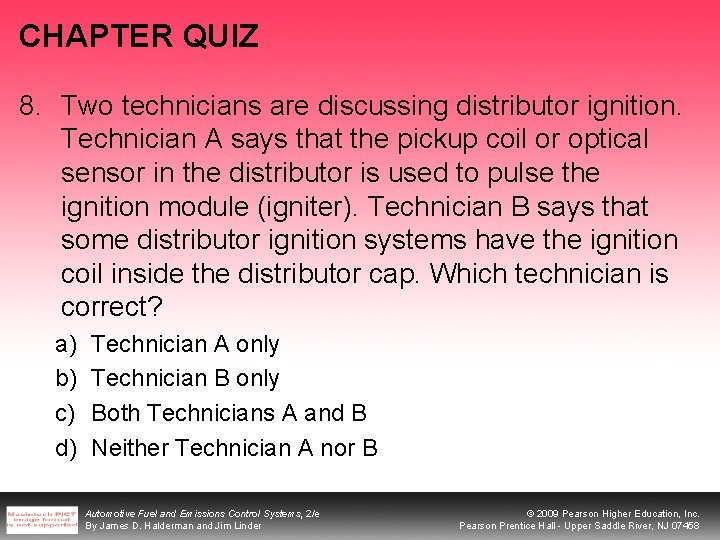
CHAPTER QUIZ 8. Two technicians are discussing distributor ignition. Technician A says that the pickup coil or optical sensor in the distributor is used to pulse the ignition module (igniter). Technician B says that some distributor ignition systems have the ignition coil inside the distributor cap. Which technician is correct? a) b) c) d) Technician A only Technician B only Both Technicians A and B Neither Technician A nor B Automotive Fuel and Emissions Control Systems, 2/e By James D. Halderman and Jim Linder © 2009 Pearson Higher Education, Inc. Pearson Prentice Hall - Upper Saddle River, NJ 07458
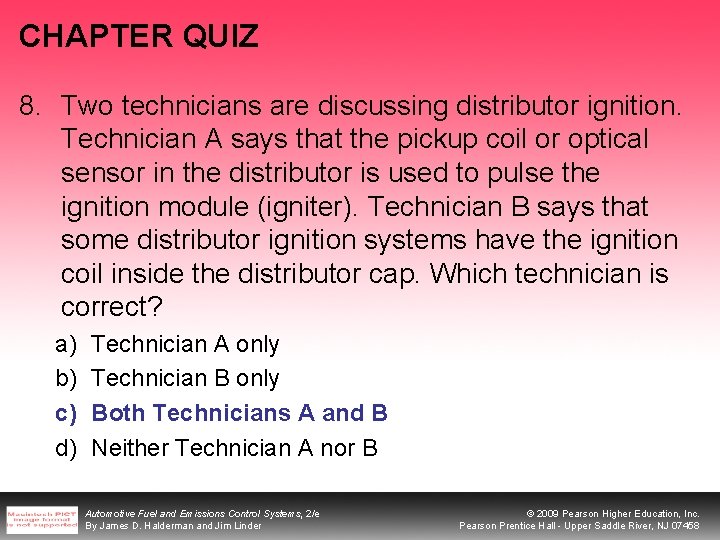
CHAPTER QUIZ 8. Two technicians are discussing distributor ignition. Technician A says that the pickup coil or optical sensor in the distributor is used to pulse the ignition module (igniter). Technician B says that some distributor ignition systems have the ignition coil inside the distributor cap. Which technician is correct? a) b) c) d) Technician A only Technician B only Both Technicians A and B Neither Technician A nor B Automotive Fuel and Emissions Control Systems, 2/e By James D. Halderman and Jim Linder © 2009 Pearson Higher Education, Inc. Pearson Prentice Hall - Upper Saddle River, NJ 07458
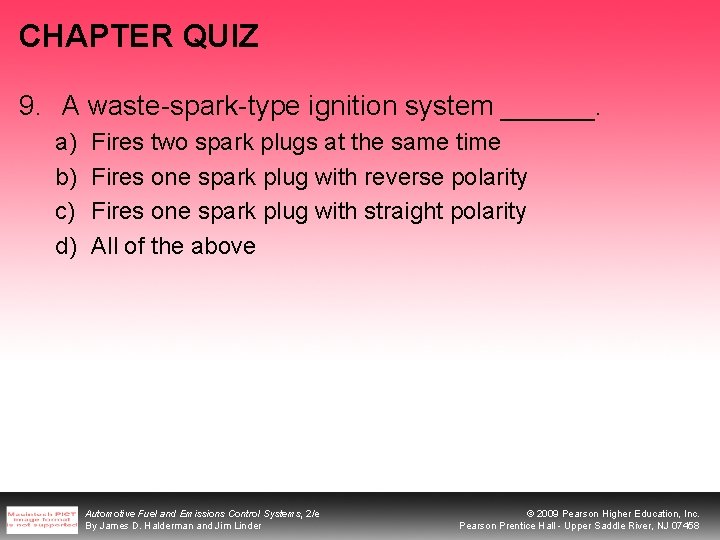
CHAPTER QUIZ 9. A waste-spark-type ignition system ______. a) b) c) d) Fires two spark plugs at the same time Fires one spark plug with reverse polarity Fires one spark plug with straight polarity All of the above Automotive Fuel and Emissions Control Systems, 2/e By James D. Halderman and Jim Linder © 2009 Pearson Higher Education, Inc. Pearson Prentice Hall - Upper Saddle River, NJ 07458
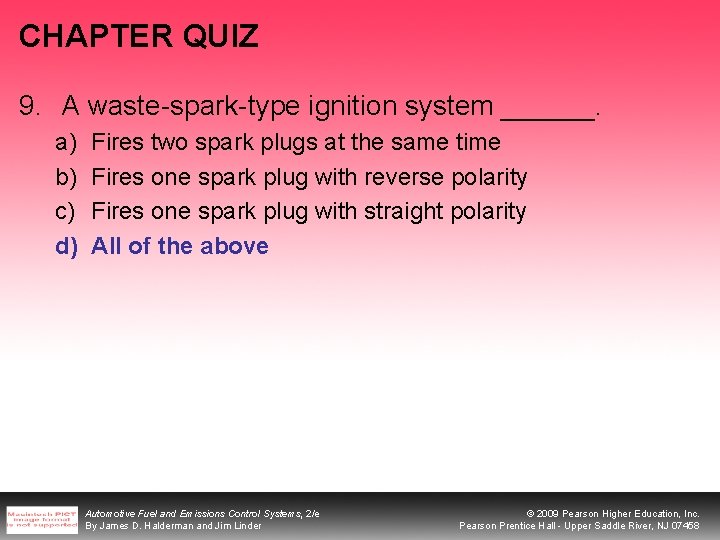
CHAPTER QUIZ 9. A waste-spark-type ignition system ______. a) b) c) d) Fires two spark plugs at the same time Fires one spark plug with reverse polarity Fires one spark plug with straight polarity All of the above Automotive Fuel and Emissions Control Systems, 2/e By James D. Halderman and Jim Linder © 2009 Pearson Higher Education, Inc. Pearson Prentice Hall - Upper Saddle River, NJ 07458
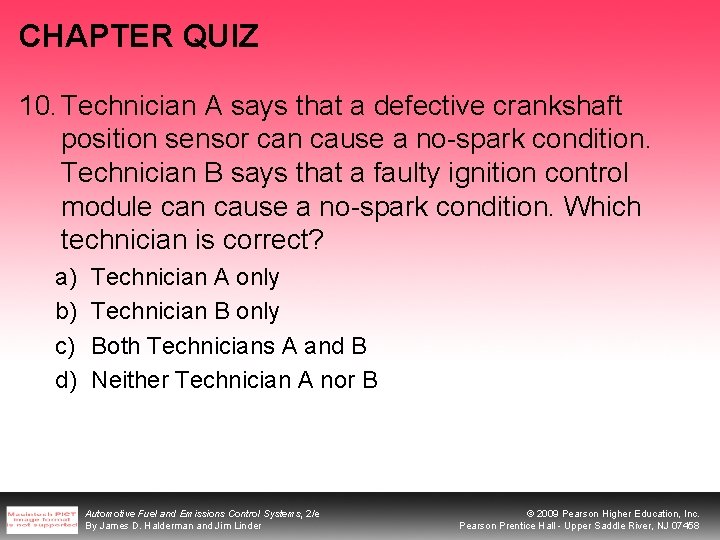
CHAPTER QUIZ 10. Technician A says that a defective crankshaft position sensor can cause a no-spark condition. Technician B says that a faulty ignition control module can cause a no-spark condition. Which technician is correct? a) b) c) d) Technician A only Technician B only Both Technicians A and B Neither Technician A nor B Automotive Fuel and Emissions Control Systems, 2/e By James D. Halderman and Jim Linder © 2009 Pearson Higher Education, Inc. Pearson Prentice Hall - Upper Saddle River, NJ 07458
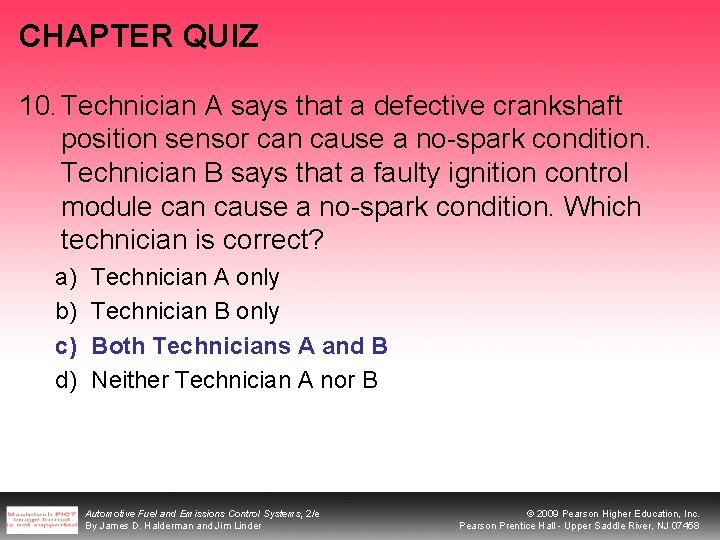
CHAPTER QUIZ 10. Technician A says that a defective crankshaft position sensor can cause a no-spark condition. Technician B says that a faulty ignition control module can cause a no-spark condition. Which technician is correct? a) b) c) d) Technician A only Technician B only Both Technicians A and B Neither Technician A nor B Automotive Fuel and Emissions Control Systems, 2/e By James D. Halderman and Jim Linder © 2009 Pearson Higher Education, Inc. Pearson Prentice Hall - Upper Saddle River, NJ 07458
- Slides: 69















